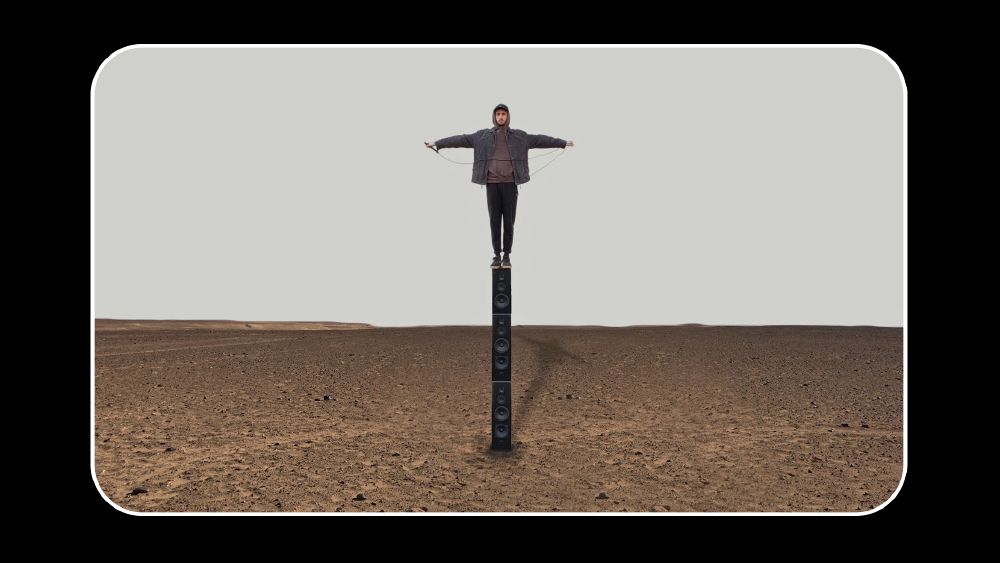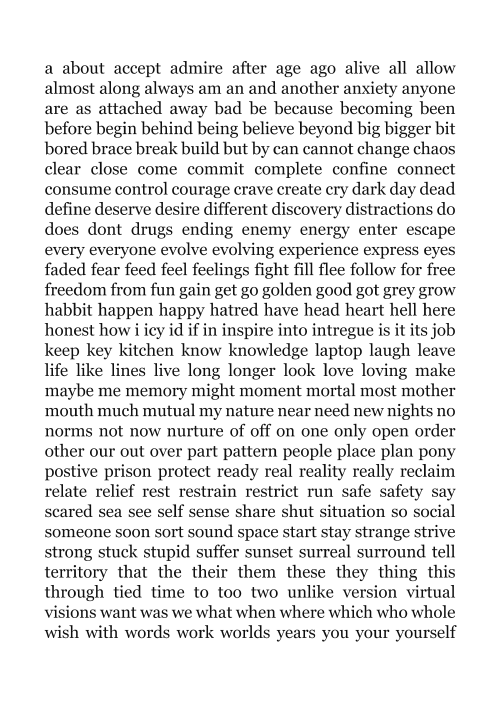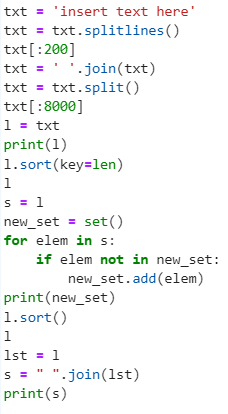THE GREAT BALANCING ACT
https://vimeo.com/827003966?share=copy
THE SILENT EQUILIBRIUM
"You’re so quiet / you’re almost tomorrow" Ocean Vuong, from ‘Into the Breach’, Night Sky With Exit Wounds
Form yesterday’s noise, I compile a selection of texts. These texts range from personal journals to future manifestations. Today, through the sober eyes of my machine, I am able to take control over my experiences and aspirations. The result; a generated poem forming the basis of this experiment and video performance. With the help of some basic python programming, I assemble and rearrange these written words in an attempt at organizing my inner environment and gaining a sense of structure and control.
From the earliest urban settlements, humans have sought to establish structures that provide a sense of control over their environments. This need for organization is rooted in our basic survival instict. Since then, our outer environments have changed drastically. The human experience has advanced onto a different playfield, surrounded by concrete towers and complex machineries. Nowadays, we find ourselves facing different types of dangers, ones of the modern day world, of man made systems and complex hierarchies. Today’s human is left feeling weak and margenalized. What will tomorrow’s world bring?
Eremocene; is what scientist Edward O. Wilson has named the coming geological era. Life has become lonely for the human species in the Eremocene. The age of loneliness is characterised by natural destruction, a global loss of biodiversity and the dominance of the technosphere over the biosphere. As this eminent hazard seems immutable, it’s time to start thinking inwards. How can we transcend our current state of being in order to adapt to tomorrow’s world? How can we find inspiration from our surrounding environment and implement it inwards? How can we reach a post human state, while not losing what makes us most human? How can a more equalized being find a sense of balance in rationality?
Humans, delicate creatures, are caught up in the “rhythms, pulsions and patternings of non-human forces,” wrote Mark Fisher, describing the eerie knowledge that there are always other presences sharing our interiority with us. “There is no inside except as a folding of the outside”, Fisher continues: “the mirror cracks, I am an other, and I always was.”
A destruction of the self is necessary for a construction of a newer system of being, a decolonized perspective that can stand its ground in tomorrow’s world. An introspective reflection inwards is necessary at transforming the inner self in direct relation to the outer self.
Homeoestasis; derives from Greek, with home: “similar”, and stasis: “stable”. Homeoestasis is any self-regulating process by which biological or physical systems tend to maintain stability while adjusting to conditions that are optimal for survival. If homeoestasis is successful, life continues; if unsuccessful, disaster or death ensues. The stability attained is actually a dynamic equilibrium, in which continuous change occurs yet relatively uniform conditions prevail.
THE INVISIBLE NOW
Since the industrial revolution, human life has undergone a comprehensive transformation. This has led to a growing complexity of machines, ranging from tiny components to invisible software. With an increasing reliance on machines, they have become an integral part of our existence and an extension of our capabilities. For instance, smartphones have become an extension of human memory, senses, and mental abilities, even enabling us to transcend the boundaries of time and space.
The line between humans and technology is becoming further more blurred, making it challenging to discern where humans end and machines begin. What does this integration mean for the human condition? To what extent have we assimilated into this hybrid of organism and machine? And in which ways is it already limiting us? Taking all of this into consideration, the notion of the cyborg seems very present here and now, and in simpler forms than futuristic visions.
A Cyborg, as Donna Haraway explains, is a cybernetic organism, a hybrid of machine and organism, a creature of social reality as well as a creature of fiction.
The cyborg, according to some, goes beyond just enhancing human capabilities but also challenges the very concept of what it means to be human. As Claudia Springer noted in 1996, "the cyborg undermines the very concept of 'human'”. But what truly defines our humanity? Is it our emotions? or perhaps our memories? is it our experiences and aspirations? our rationality? or even our weaknesses?
The stakes are high as the concept of the cyborg questions our very essence. That's why it is often seen as a form of "dehumanization." Yet, this in fact may also offer a type of liberation, one that could open up exciting possibilities beyond the limitations of the human condition.
THE POLITICAL INTELLIGENCE
Artificial intelligence in itself is a powerful force that has been redefining knowledge, communication, and power. It is transforming the very foundations of our social, cultural, and political structures, as well as shaping our understanding of the human body, subjectivity, and identity: the basic essence of what we are and what we can become.
My goal with this work is to investigate the expanding role of artificial intelligence in our modern day world, as I put into focus the relationship between desire, illusion and danger, the business of the spectacle, how we anthropomorphize nonhuman entities, how empathy emerges, and the overall politics of artificial intelligence. But what forms of politics does artificial intelligence propagate? Whose interests does it serve, and who bears the greatest risk of harm? Should there be limitations placed on the utilization of AI?
Artificial intelligence has always been an infrastructure, an industry, a form of exercising power, and a way of seeing. It embodies a complex set of expectations, ideologies, desires, and fears.
In this way, AI can be a tool for power and control, but also for justice and liberation, depending on who wields it and for what purposes. As Ursula Franklin writes, “The viability of technology, like democracy, depends in the end on the practice of justice and on the enforcement of limits to power.”
Through this piece, the political nature of being human is intertwined with artificial intelligence and the performance at hand. The performance itself has political intentions and draws inspiration from the performative in politics. The mise-en-scene and visual language of the accompanying video intentionally references the theatricality of life itself.
THE AMPLIFIED REALM
The blending of human and machine can manifest itself in several ways. However, will we ever reach a point where our emotional intelligence itself can be imparted through adequate training and resources? Such a perspective suggests that emotional intelligence is an inherent, autonomous quality, a separate entity from the social, cultural, historical, and political contexts that shape it.
In this work, through the use of Python code, my experiences and ambitions have been transformed into a more detached and structured form, one that reflects my hybrid presence and altered identity. This transformation is amplified through the speakers, reverberating onto my surrounding and creating a new manifestation of my self in the outer realm. The tower of technosphere here serves as an amplifying tool to reach as many people as possible through both sound and sight. However, do words still hold any rational validity when removed from their subjective context?
The towering height of the structure instills a feeling of peril, precariousness, and unpredictability, infusing each spoken word with a heightened sense of risk. Through this, I am able to attain a sense of equilibrium over my own voice as I let go of each word. This transformative journey, which begins from within and expands outward, is equally liberating and daunting.
The emptiness of the surrounding echoes the words right back to me, resembling the biological geolocation found in many animals, as well as acoustic locators and radars that detect prey and avoid obstacles through acoustic wayfinding. The chaos in the sonic output creates a certain poetic notion, reminiscent of the sounds of modern revolution.
As Hannah Arendt said, "People can only be free in relation to one another." However, in this video performance, the generated poem speech is being performed solely to the self in the presence of the camera. This dynamic of empty space, human self, and machine creates a necessary energetic interplay. It raises questions of; who the performer and who the observer? Who is the leader and who is the follower? Who holds the power in the hierarchical dynamics of today’s world? Can one be truly free in relation to themselves?
GENERATED POEM
PYTHON CODE
READINGS
A Cyborg Manifesto By Donna Haraway
http://pdf-objects.com/files/Meerdo-HarawayCyborgManifesto.pdf
The Atlast of AI - Power, Politics, and the Planetary Costs of Artificial Intelligence By Kate Crawford
Hegel in a Wired Brain By Slavoj Žižek
https://drive.google.com/file/d/1I2u2a8OTaIxzDvLJd49D-fuY43qvss4x/view?usp=share_link
We are all cyborgs: How machines can be a feminist tool By Nour Ahmad
We Are Borg: Cyborgs and the Subject of Communication By David Gunkel


